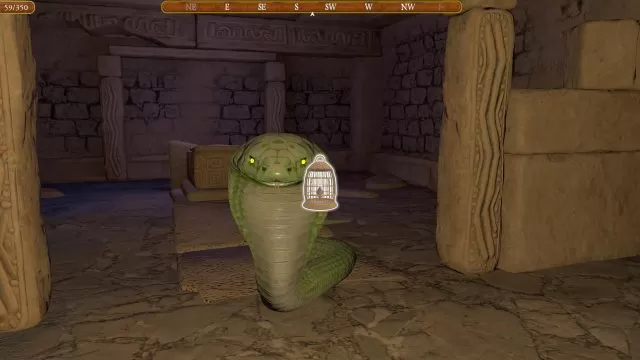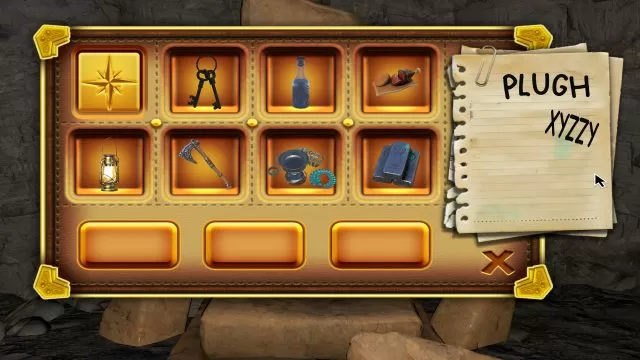Colossal Cave Review – Subterranean Obsolescence
The original Colossal Cave Adventure is one of the oldest examples of digital interactive fiction. In 1976, most civilians used the term “electronic brain” while referencing computers, and “video games” weren’t a thing because most computers lacked games. And screens. Colossal Cave, or simply Adventure, was made to be played on an industrial mainframe computer, using a printer as the output device. It consisted of 700 lines in Fortran, was open source, and circulated freely amongst the hard-core nerds who operated those living room-sized contraptions. They modified and expanded the code over the years, adding more content, challenges, and loot.
The cultural impact of Colossal Cave is an order of magnitude greater than colossal. Traces of its DNA are present in almost every existing gaming genre. It influenced many legendary game creators, including Roberta and Ken Williams, founders of Sierra-On-Line. The makers of Kings’s Quest and many other classic adventure blockbusters are long since retired, but Covid lockdowns caused the stir in ms. Roberta. She enlisted help from Cygnus entertainment and together, they decided to remake, or rather, reimagine, the old and venerable Colossal Cave Adventure.
Plunder, Score, Dont get Lost

It was a noble idea that failed in some significant respects. The core problem in molding half a century-old text-based adventure into modern 3D form is the inevitable loss of charms during translation. To minimize that, Roberta and her team tried to preserve most of its ancient elements, ignoring the obsolescence factor. They kept the colorful descriptions of every room, introducing the narrator to talk about the things you are seeing with your own eyes. This weird redundancy is pretty harmless, but the inventory space limited to seven slots, an abundance of complex mazes consisting of identical rooms, harebrained puzzles, instant deaths, and other design elements abandoned in the eighties, aren’t.
The core objective of Colossal Cave is the score. Venturing the complex subterranean system full of wonder, dangers, and wondrous dangers, you get points for liberating various riches and hauling them to the surface. Instead of typing „Go North” or “Take Keys”, you interact with the game world using a mouse and keyboard or gamepad. There’s no story in the usual sense, no objective more complex or noble than basic plunder. Max obtainable score is 350, but some events outside of your control can negatively affect it. For example, a random dwarf will occasionally pop up and throw an axe or knife at you, killing you instantly if RNG decides it. You’ll respawn at the surface, sans some points, fuming.
Nobody Likes Mazes, To Be Honest

If we substract mazes, the cave system is not THAT colossal. Those labyrinthine sections are the single most infuriating element of the game. I really can’t remember the last time I experienced the insanity of navigating dozens upon dozens of identical rooms, using pen and paper to catch my bearings. Modron maze in Planescape: Torment comes to mind, the single stain in an otherwise sublime gaming experience. Colossal Cave has several such mazes. They probably were necessary for saving RAM in ancient computers, representing a resource-saving way to generate content. Nowadays, they are nothing more than weird and repelling relic, like chewing tobacco.
Regular puzzles aren’t much better either. How do you dismiss the huge snake baring your way into the tomb of the ancient king? Simple, just release the tiny bird you previously caught (by “using” a wicker cage on it). There are many such nebulous solutions, forcing you to do flat experimentation instead of thinking. All of it is true to the source material, but most of it should have been forgotten. As I previously said, the game is trying to exist in both the past and the present, satisfying neither audience. Come to think of it, I really doubt that fans of the original represent any significant gaming demographic nowadays. What is the commercial reason for trying to stay true to their expectations?
Some Things Should Have Stayed Buried

Colossal Cave as reimagined by Roberta Williams looks obsolete. Like the student project made in Unity, it has basic utilitarian gfx, simple models, and even simpler environments. Sometimes, the discrepancy between the colorful portrayal offered by the narrator and the plain ugliness in front of you is almost comical. “The Majestic frozen river shining like a cascade of diamonds” looks like a beef tongue made of ice connecting a flat roof and unremarkable floor. Except for high resolution and VR support, Colossal Cave visuals would have been meh even in the Xbox 360 era.
My last gripe with the game is the price of forty bucks. That’s really weird and wrong, especially since there aren’t any royalties to be paid. Colossal Cave Adventure was always an open-source project, and slamming the remake with the insane price tag feels inappropriate at best. At worst, it smells of pure greed. If I were to play devil’s advocate, I could argue that a game about greed and plunder maybe should have an exorbitant price. People will vote with their wallets as always, but I doubt that Roberta and Cygnus will like the result.
Colossal Cave is the game for the modern niche audience, nostalgic for something they had never experienced. It’s a perfect gift for the hipster gaming enthusiast. For that special someone who will pull the fascinating piece of trivia from 1976, but refrain from actually playing the game.
Highs
- Opportunity to experience an ancient progenitor of modern games in semi-modern form.
- For better or worse, it’s true to the original.
Lows
- Obsolete, illogical puzzles and infuriating mazes.
- Looks extremely dated. Like twenty years dated.
- Steep price.

